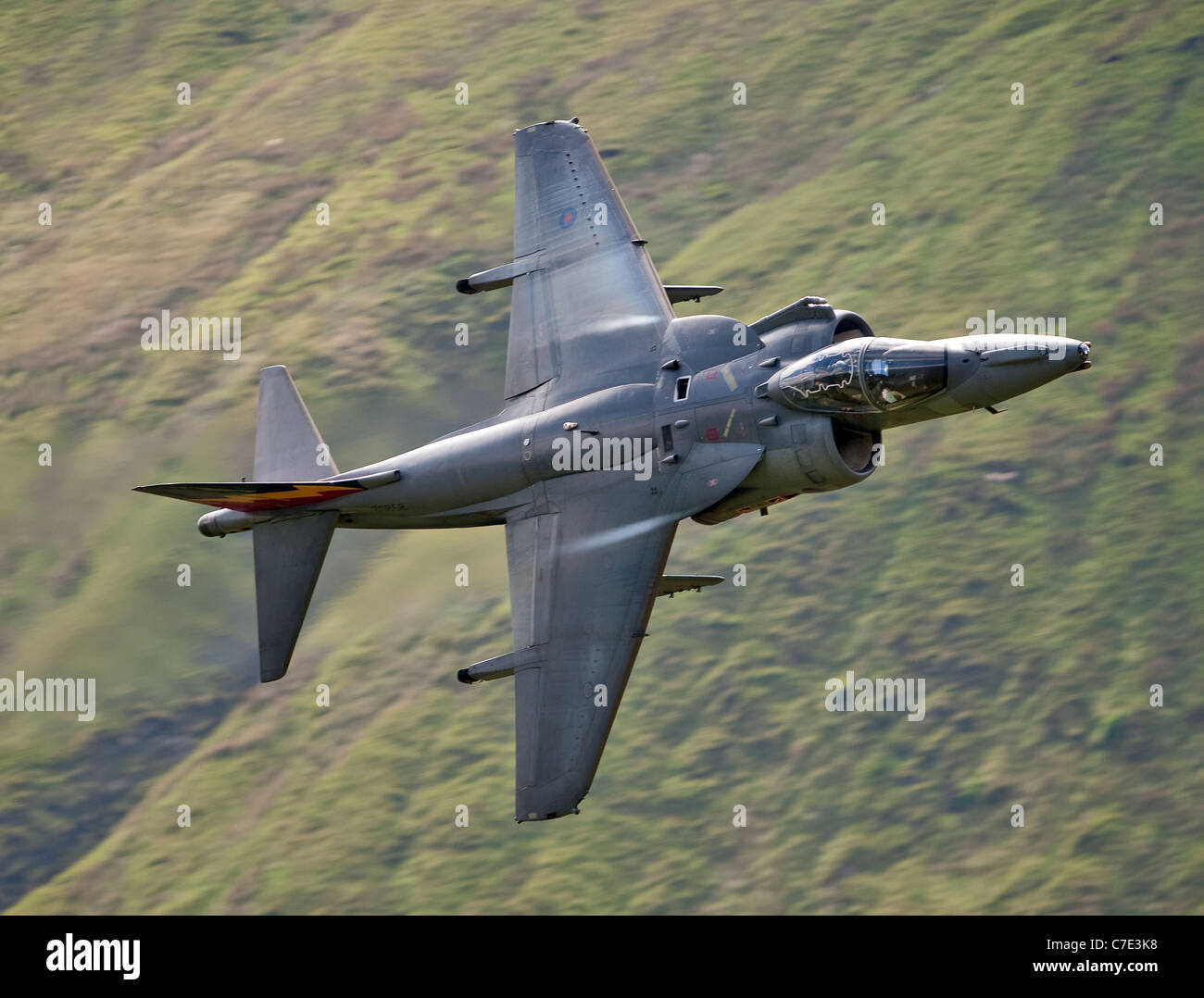RAF Harrier GR9 attack jet fighter aircraft low level in north Wales (mach loop) shot from the hill side

Image details
Contributor:
andrew chittock / Alamy Stock PhotoImage ID:
C7E3K8File size:
48.5 MB (1.4 MB Compressed download)Releases:
Model - no | Property - noDo I need a release?Dimensions:
4722 x 3591 px | 40 x 30.4 cm | 15.7 x 12 inches | 300dpiDate taken:
17 June 2010Location:
In the mach loop North Wales LFA 7More information:
This image could have imperfections as it’s either historical or reportage.
In RAF service, Harriers are used in the ground attack and reconnaissance roles. Unlike the Harrier AV8B+ upgrade, the RAF have not installed a radar into its aircraft, although the aircraft retains an Inertial Navigation System. The primary air-to-air missile (AAM) of the Harrier is the infrared-homing AIM-9 Sidewinder (the combination of Harrier and Sidewinder proved effective against Argentinian Mirages in the Falklands conflict), but it does not carry the medium range AIM-120 AMRAAM missile. With the retirement of the Sea Harrier, it had been suggested that its Blue Vixen radar could be transferred to the GR9 fleet. However, the Ministry of Defence rejected this as risky and too expensive. The Armed Forces Minister Adam Ingram estimated that the cost would be in excess of £600 million.[2] The Harrier GR7 formed the spearhead of the RAF's contribution to Operation Allied Force, the NATO mission in Kosovo. During this campaign the RAF identified significant shortcomings in its arsenal. As a result the service ordered the AGM-65 Maverick stand-off missile and the Enhanced Paveway which incorporates GPS guidance which would negate the effects of smoke and bad weather. Using updated ordnance as well as unguided iron and cluster munitions, RAF Harrier GR7s played a prominent role in Operation Telic, the UK contribution to the U.S.-led war against Iraq in 2003. RAF GR7s participated in strike and close air support missions throughout the conflict. On 14 October 2005 a RAF Harrier GR7A was destroyed and another was damaged in a rocket attack by Taliban forces while parked on the tarmac at Kandahar in Afghanistan. No one was injured in the attack. The damaged Harrier was repaired, while the destroyed one was replaced by another aircraft.[3] The first operational deployment of the Harrier GR9 was in January 2007 at Kandahar in Afghanistan as part of the NATO International Security Assistance Force (ISAF). Harrier GR7s were deployed to Afghanistan in 2006 as part of the